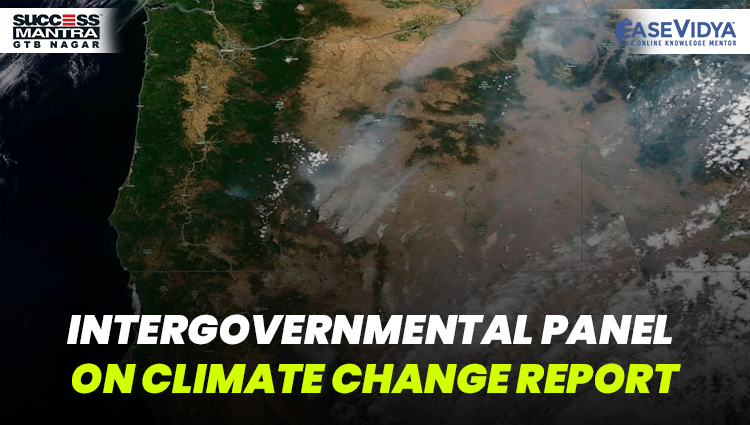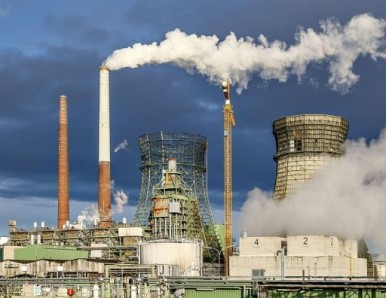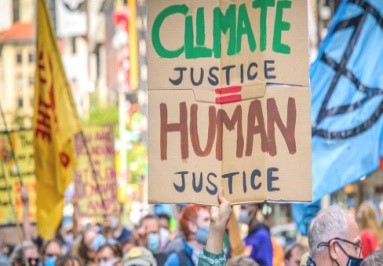
INTERGOVERNMENTAL PANEL ON CLIMATE CHANGE REPORT
INTERGOVERNMENTAL PANEL ON CLIMATE CHANGE REPORT

Recently, the Intergovernmental Panel on Climate Change (IPCC) released the first part of its Sixth Assessment Report (AR6) titled Climate Change 2021: The Physical Science Basis. It is prepared by the scientists of Working Group-I. The two remaining parts would be released in 2022. It noted that global net-zero by 2050 was the minimum required to keep the temperature rise to 1.5 degree Celsius. It sets the stage for the Conference of Parties (CoP) 26 conference in November 2021.
AVERAGE SURFACE TEMPERATURE
The average surface temperature of the Earth will cross 1.5 °C over pre-industrial levels in the next 20 years (By 2040) and 2°C by the middle of the century without sharp reduction of emissions. In 2018, the IPCC’s Special Report Global Warming of 1.5°C had estimated that two-fifths of the global population lived in regions with warming above 1.5°C. The last decade was hotter than any period of time in the past 1,25,000 years. Global surface temperature was 1.09°C higher in the decade between 2011-2020 than between 1850-1900. This is the first time that the IPCC has said that the 1.5°C warming was inevitable even in the best case scenario.
CARBON DIOXIDE (CO2) CONCENTRATIONS

They are the highest in at least two million years. Humans have emitted 2,400 billion tonnes of CO2 since the late 1800s. Most of this can be attributed to human activities, particularly the burning of fossil fuels. The effect of human activities has warmed the climate at a rate unprecedented in 2,000 years. The world has already depleted 86% of it’s available carbon budget.
IMPACT OF GLOBAL WARMING
Sea- Level Rise: Sea-level rise has tripled compared with 1901-1971. The Arctic Sea ice is the lowest it has been in 1,000 years. Coastal areas will see continued sea-level rise throughout the 21st century, resulting in coastal erosion and more frequent and severe flooding in low-lying areas. About 50% of the sea level rise is due to thermal expansion (when water heats up, it expands, thus warmer oceans simply occupy more space).
Precipitation & Drought: Every additional 0.5 °C of warming will increase hot extremes, extreme precipitation and drought. Additional warming will also weaken the Earth’s carbon sinks present in plants, soils, and the ocean.
Heat Extremes: Heat extremes have increased while cold extremes have decreased, and these trends will continue over the coming decades over Asia.
Receding Snowline & Melting Glaciers: Global Warming will have a serious impact on mountain ranges across the world, including the Himalayas. The freezing level of mountains are likely to change and snowlines will retreat over the coming decades. Retreating snowlines and melting glaciers is a cause for alarm as this can cause a change in the water cycle, the precipitation patterns, increased floods as well as an increased scarcity of water in the future in the states across the Himalayas. The level of temperature rise in the mountains and glacial melt is unprecedented in 2,000 years. The retreat of glaciers is now attributed to anthropogenic factors and human influence.
INDIAN SUB-CONTINENT SPECIFIC FINDINGS:
Heatwaves: Heatwaves and humid heat stress will be more intense and frequent during the 21st century over South Asia.
Monsoon: Changes in monsoon precipitation are also expected, with both annual and summer monsoon precipitation projected to increase. The South West Monsoon has declined over the past few decades because of the increase of aerosols, but once this reduces, we will experience heavy monsoon rainfall.
Sea Temperature: The Indian Ocean, which includes the Arabian Sea and Bay of Bengal, has warmed faster than the global average. The sea surface temperature over the Indian ocean is likely to increase by 1 to 2 °C when there is 1.5°C to 2°C global warming. In the Indian Ocean, the sea temperature is heating at a higher rate than other areas, and therefore may influence other regions.
NET ZERO EMISSIONS

It means that all man-made greenhouse gas emissions must be removed from the atmosphere through reduction measures, thus reducing the Earth’s net climate balance, after removal via natural and artificial sink, to zero. This way humankind would be carbon neutral and global temperature would stabilise.
Current Situation: Several countries, more than 100, have already announced their intentions to achieve net-zero emissions by 2050. These include major emitters like the United States, China and the European Union. India, the third largest emitter in the world, has been holding out, arguing that it was already doing much more than it was required to do, performing better, in relative terms, than other countries. Any further burden would jeopardise its continuing efforts to pull its millions out of poverty. IPCC has informed that a global net-zero by 2050 was the minimum required to keep the temperature rise to 1.5°C. Without India, this would not be possible. Even China, the world’s biggest emitter, has a net-zero goal for 2060.
INTERGOVERNMENTAL PANEL ON CLIMATE CHANGE
It is the international body for assessing the science related to climate change. It was set up in 1988 by the World Meteorological Organization (WMO) and United Nations Environment Programme (UNEP) to provide policymakers with regular assessments of the scientific basis of climate change, its impacts and future risks, and options for adaptation and mitigation. IPCC assessments provide a scientific basis for governments at all levels to develop climate related policies, and they underlie negotiations at the UN Climate Conference – the United Nations Framework Convention on Climate Change (UNFCCC).
IPCC Assessment Reports: Every few years (about 7 years), the IPCC produces assessment reports that are the most comprehensive scientific evaluations of the state of earth’s climate. So far, five assessment reports have been produced, the first one being released in 1990. The fifth assessment report had come out in 2014 in the run up to the climate change conference in Paris. The Assessment Reports - by three working groups of scientists.
- Working Group-I - Deals with the scientific basis for climate change.
- Working Group-II - Looks at the likely impacts, vulnerabilities and adaptation issues.
- Working Group-III - Deals with actions that can be taken to combat climate change.
CONCLUSION
Climate change is described by many as a far greater threat to humanity than Covid-19, because of its irreversible impacts. Many of the impacts such as sea level rise and melting of glaciers will continue for many years. There is a need for a drastic and immediate cut in carbon emissions, given that the changes to the climate already made are not reversible. All nations, especially the G20 and other major emitters, need to join the net-zero emissions coalition and reinforce their commitments with credible, concrete and enhanced Nationally Determined Contributions and policies before COP26 in Glasgow, Scotland.
TEST YOURSELF
Q.1 Recently, the Intergovernmental Panel on Climate Change (IPCC) released the first part of its Sixth Assessment Report (AR6) titled __________?
- Ecosystem Restoration: The Physical Science Basis: ANSWER
- Global temperature rise: Climate Change
- Climate Change 2021: The Physical Science Basis
- None of the above
Q.2 The 2021 United Nations Climate Change Conference, also known as COP26, is the 26th United Nations Climate Change conference which is scheduled to be held in which of the following places?
- Glasgow, Scotland: ANSWER
- Oslo, Norway
- Amsterdam, Netherlands
- None of the above
Q.3 Intergovernmental panel on Climate Change (IPCC) is the international body for assessing the science related to climate change. It was set up in 1988 by ________?
- World Meteorological Organization (WMO)
- United Nations Environment Programme (UNEP)
- World Environment Organisation (WEO)
- Both A & B: ANSWER
Q.4 By which of the following years India have targeted to achieve net zero emissions which is an India’s sustainable economic development ambitions?
- 2025
- 2030
- 2045
- 2050: ANSWER
Q.5 Consider the following statements and state which of the following is incorrect in the reference to the above mentioned passage?
- ‘Net zero emissions’ refers to achieving an overall balance between greenhouse gas emissions produced and greenhouse gas emissions taken out of the atmosphere.
- The Paris Climate agreement aims to substantially reduce global greenhouse gas emissions in an effort to limit the global temperature increase in this century to 5 degrees Celsius.
- Only I follows
- Only II follows: ANSWER
- Both I & II are correct
- None is correct













0 Comment